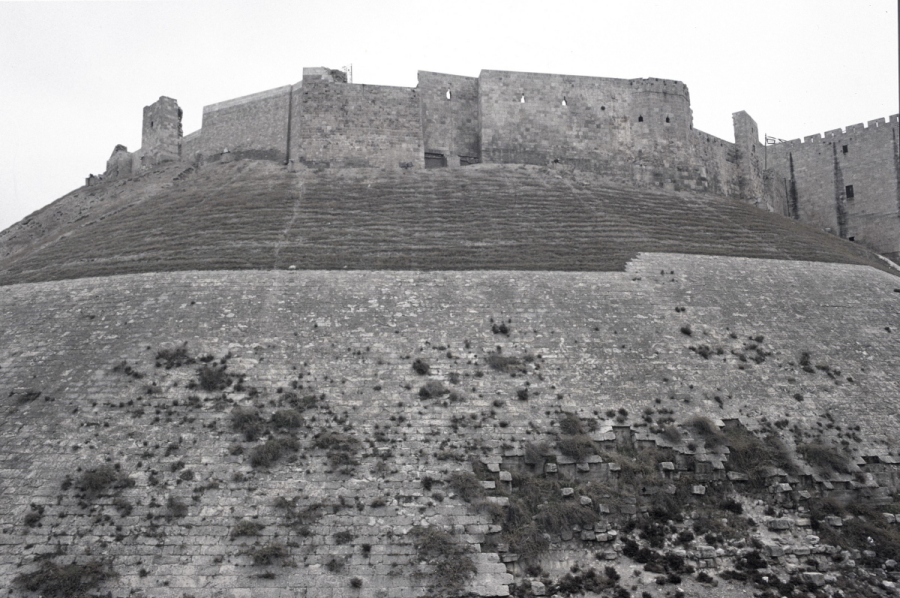Wednesday 1st December 1993, morning
It is a grey, very cold day. I think it may be trying to snow. Will my main memory of Syria be of the cold? Why didn't I bring gloves? The coach turns a corner and I see it. The citadel of Aleppo is a magnificent place. Perched on a steep-sided hill, heavily fortified and with only one entrance approached by a steeply inclined bridge over its 30m wide - now dry - moat. I forget the cold as our little group makes its way through the first tower gate and across the bridge, up towards the single entry point, the exercise providing some warmth. Half way across our guide stops. He is at pains to explain that the place had been designed for defence. He points to the moat and the steep sloping sides rising up from it. He conjures images of the past. Imagine trying to invade: would we attempt to cross the moat, which until the 1940s was still filled with water, scramble up the smooth stones and scale the citadel walls as arrows, boiling oil and hot lime rained down on us or would we charge over this bridge to storm the entrance?
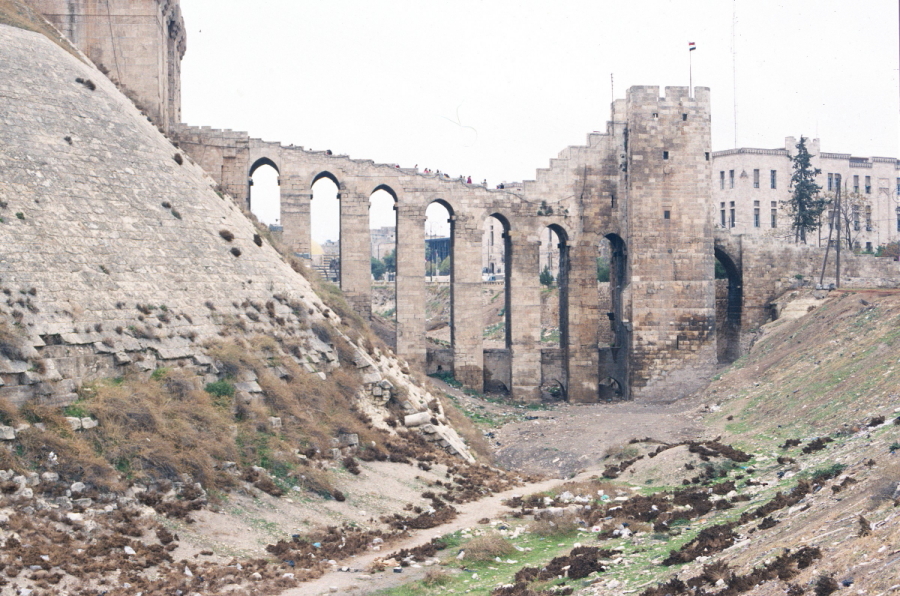
"Charge over the bridge" we murmur on cue, bringing a wide smile to the face of the guide as he resumes our trek across the bridge. We soon learn thay the only entrance to the inner citadel is narrow and twisted. Anyone storming over the bridge would find themselves in the confined space of the entrance tower facing a solid wall, and a sharp right turn to the gate in the side wall. No room to wield a battering ram, the momentum of any charge lost and the troops all but trapped and vulnerable to arrows and boiling oil sent their way from above, behind and from the side. Even if they broke through at this point the invaders would face more ambushes in the twists and turns through the entrance tower before reaching the inner citadel.
We, however, are not invaders and easily make our way inside where our guide is joined by the director of the citadel. Between them they tell us more about its architecture and history. As they lead our group along the stone pathways, up steps and into halls they point to inlaid stones, inscriptions which they translate, arches above doorways and niches in walls which provide magnificent echoes. I catch only snatches, the cold is starting to bite again. I look in the direction of their gestures and try to remember what I see. I will look them up in the guide book later, when I'm somewhere warm again. But I hear enough to get the gist: The citadel was developed, modified, extended and strengthened over time until it evolved into a fortified city complete with a palace, residences, baths, mosques, barracks, meeting rooms and support services including an underground water cistern that could support the inhabitants for a year, and a granary.
Everyone apart from me seems to know about Saladin and the crusades and someone asks if the citadel had been his base. The guide is talking to the person who asked the question and I don't hear his answer, but I hear when the questioner is talking to another member of the group: although Saladin had ruled Aleppo it was his son who had more to do with the citadel. In the early thirteenth century he had overseen significant changes resulting in more or less the structure it is today. During the crusades a number of high ranking crusaders had been held prisoner here for years, either until they died or the appropriate ransoms were paid. I read later in the guide book that although the crusaders never took the citadel it was sacked in 1400 by the Mongols lead by Timur (Tamerlane) when they captured Aleppo, and it was they who built the Throne Hall above the fortified entrance towers.
As we make our way back to the entrance our guide tells us that since the 1970s there have been extensive renovations made to the citadel and parts of it which had fallen down have been rebuilt. There have also been attempts to excavate starting in the 1930s and again a couple of time since, but not much had yet been learned although they uncovered many skeletons in the dungeons. The guide and director are strongly of the opinion that excavations should be continued as they believe they may reveal more about life across the centuries within the citadel and eventually the of the role of the hill itself, all adding to the history of Aleppo.
We walk briskly back to the coach. Our next stop is the National Museum. I hope it will be warmer than the stone cold citadel.
Note: since I visited further archeological work was undertaken and many more discoveries made, but work was suspended in 2011 with the outbreak of the civil war.
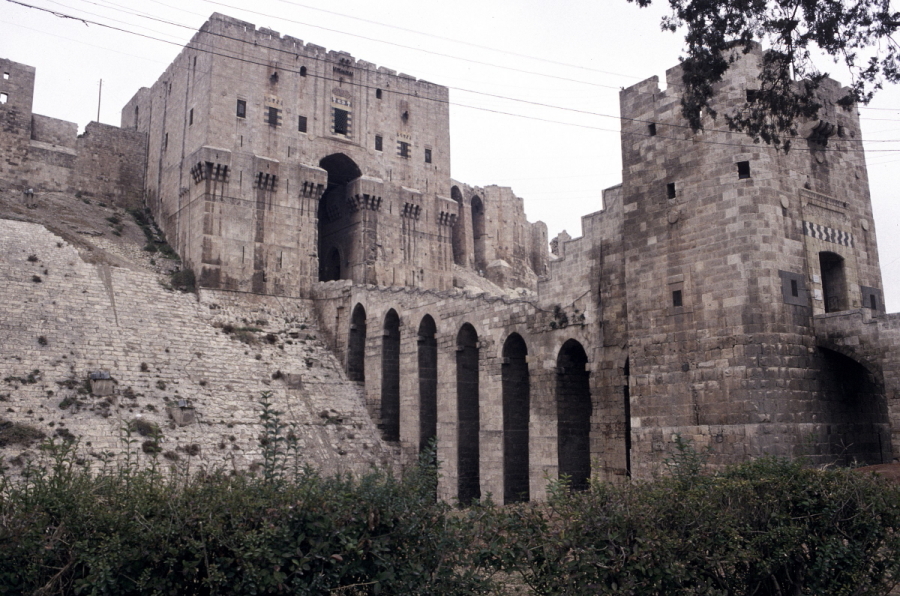
Entrance fortifications comprising two towers with Hall of Thrones above them. The gateway is under the arch, just visible at the bottom of the right hand tower.
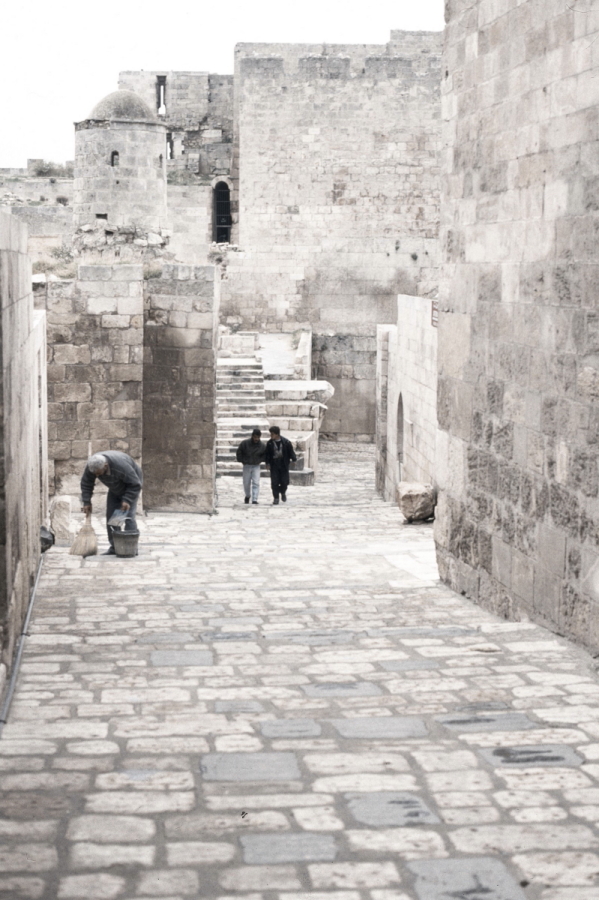
A street inside the citadel
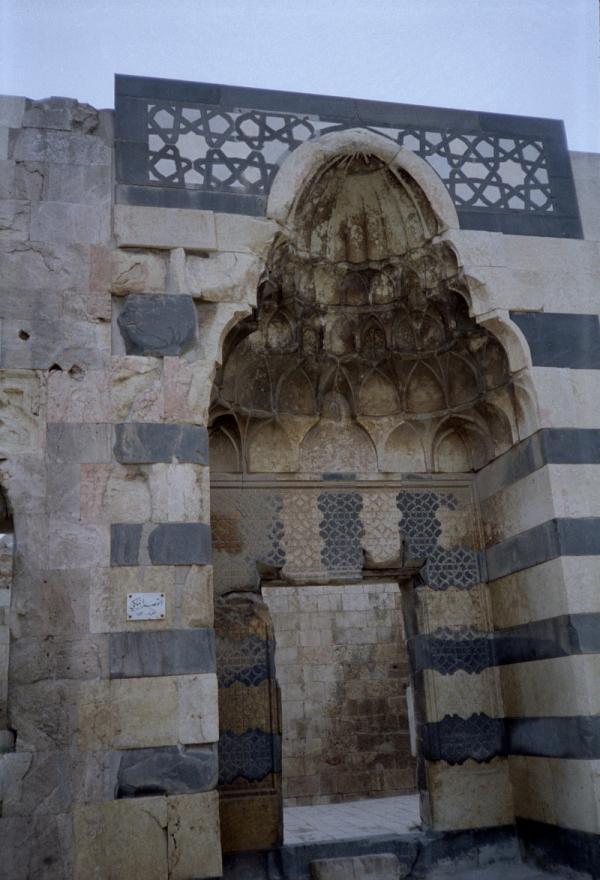
Entrance to the Royal Palace inside the Citadel
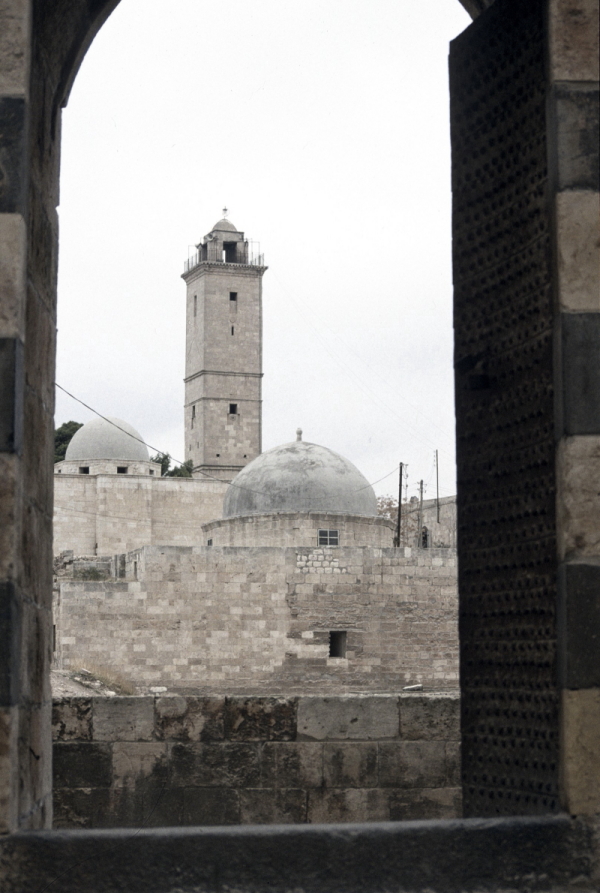
View of the Great Mosque
